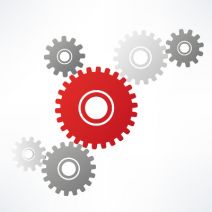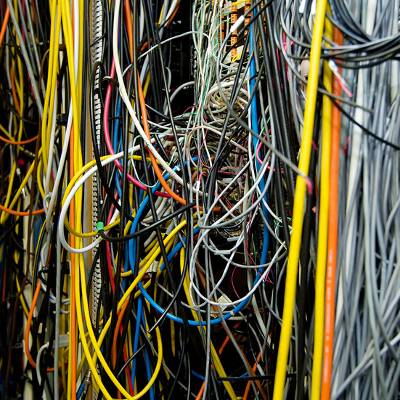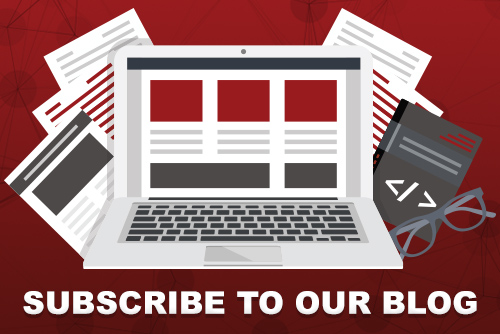The improvement in technology directly contributes to the amount of productivity business sees. One place this is evident is in the way in which businesses use collaboration tools to move business forward. Let’s take a brief look at what exactly we mean by collaboration tools and how they benefit the businesses that use them.
Directive Blogs
You can make more money, but you can’t make more time. Making the most of your time at work isn’t always easy. There are all types of unexpected distractions that take up a lot of time, so you should know what works to help you get the most out of the time you do have. Today, we present three considerations that will help you manage your time better.
With so many things that need to be accomplished each day, it always helps to have all the information needed to complete these tasks. If a task has no context assigned to it or no insight into how to approach it, productivity and morale are going to suffer. To prevent this, you need to properly task out your team’s goals. Here, we’ve provided some practices to help.
Productivity is a huge priority in any business. This makes it crucial that all tasks can be picked up and put down as efficiently as possible. With mobile browsing now playing a major role in most users’ lives, the version of Chrome for Android devices is a very utilized tool. With these factors in mind, we’re sharing tips to make your use of Android Chrome that much more efficient and productive.
With the COVID-19 pandemic causing businesses to rethink their operational strategies, many businesses have had to make a quick digital transformation. Many businesses have accomplished this before the stay-at-home orders, but with employees working from home, we thought this was the perfect time to take a look at four tools businesses can use to improve their work-from-home strategies.
As current events have made congregating in an office irresponsible and hazardous, many companies are sustaining their operations by enabling remote work. While we normally focus on how you should properly take care of your technology, we wanted to shift our focus momentarily to the people using this technology, and how they can do so more safely.
To do so, we have to consider ergonomics.
Business efficiency can be greatly helped by putting a concrete process in place, which is why it feels so natural to develop one in the workplace. Of course, these processes should also come into play when working from home. Let’s review what makes a routine so beneficial, and how you can develop one to optimize your success.
Social distancing has more or less confined many to their homes, and so many people have begun to adopt remote working to stay busy and to keep their workplaces operational. One way to assist these activities, VoIP (or Voice over Internet Protocol) is a massively helpful tool that many businesses use. Here, we’re going over why this is.
We’ll begin by reviewing the current situation.
If they are doing their job well, a business’ decision makers are always looking for ways to increase efficiency. For years, businesses were looking to their human resources to improve, but today, technology can fill in the gaps more effectively. A culture of automation--the act of having machines do tasks that humans used to do--is proving to be a potent strategy for all types of tasks.
While there are definitely gimmicks when it comes to technology in the small business (for instance, USB-powered staplers) there are many devices and technologies that have far more utility, although they may not seem to be applicable to all industries. One example would be the digital signage solutions that have grown in popularity. While they may seem to have limited uses outside of retail, there are plenty of ways to use them to your advantage.
The word “procedure” can easily be perceived in a negative light nowadays. It just sounds so… rote… compared to the exciting and dynamic buzzwords that so many “thought-leading, influencing, social media innovators” today toss around. Now, we don’t mean to disparage these personalities - we just want to emphasize that these innovations rely on a foundation to support them, and these foundations are based on business procedures and processes.
With all the communication options available today, it can still be hard to beat the convenience and simplicity of the telephone. However, the phone is far from a perfect solution - it can be expensive, for one. However, what if there was a way for you to get a fully-featured telephone service with a variety of tools, without having to pay an arm and a leg?
When it boils down to it, there are really only two ways to operate a business: proactively, or reactively. While many businesses still rely on their reactivity to deal with their technology issues, the opposite approach is demonstrably more effective for the modern business. Let’s explore some of the effects that a proactive and reactive strategy can each have on your operations.
Business communications, which is the succinct way to say the sharing of information between people both internal and external to a company, is a key player in that company’s success. Here, we’ll analyze the different types of communication that a business could leverage, and the solutions that best enable them.
“By failing to prepare, you are preparing to fail.”
This quote is frequently attributed to Benjamin Franklin, and while it may not have actually been said by the Founding Father, it still teaches a valuable lesson - especially where disaster recovery is concerned. In other words, you need to make sure you have a working disaster recovery strategy - working being the key point.
Business owners try to avoid downtime like the plague, but it’s often a challenge to do so. The impact of downtime can be devastating for even the most well-to-do business, and this is even more so the case when you bring profits and bottom lines into view. We’ll take a look at how you can calculate the cost of a downtime event.
Technology has become so commonplace in the office environment that work can be done from just about anywhere on any device. This has led to many organizations implementing a remote workforce--at least some of the time. There are actually several benefits to remote work, even for the employer, surprisingly enough.
In today’s competitive business environment, you need all the help you can get. One of the biggest advantages you can achieve for your business is to take advantage of a trusted and reliable managed IT provider that can give your organization advice on how to navigate the murky waters of the technology world.
Inefficiency is not something that you plan for. It just happens. It happens when processes get too big, have too many moving parts, or are bogged down by excessive oversight. It happens when purposes for certain tasks change or are abandoned altogether. Other times efficiency has a different look to it and makes your optimistic projections look foolish. Whatever the reason, inefficiency is more the rule than the exception, and it’s costing your business plenty. This month, we take a look at what efficiency actually looks like and how to do your best to achieve it.
 Consolidation makes life easier. Your smartphone is a prime example of this; consolidating dozens of individual gadgets down to one easy-to-use device that can fit inside your pocket. Before smartphones, we had to travel with a carry-on bag full of electronics, but now, thanks to smartphones, traveling is much easier. This principle of consolidation also applies to IT services.
Consolidation makes life easier. Your smartphone is a prime example of this; consolidating dozens of individual gadgets down to one easy-to-use device that can fit inside your pocket. Before smartphones, we had to travel with a carry-on bag full of electronics, but now, thanks to smartphones, traveling is much easier. This principle of consolidation also applies to IT services.
Quick question for you: how many email accounts do you have? How many do you have to regularly check? How many different platforms do they utilize? If there’s too many, important communications are easy to miss in the ensuing mess of messages. Fortunately, there are a few ways that this can be avoided, which we’ll review for this week’s tip.
Fact: your PC has a limited amount of storage space. When a user runs out of space or comes close to it, they need to come up with a solution. Without taking any action, performance will lag and saving data for future projects will be impossible. By using a helpful tool like WinDirStat, you can free up space by easily identifying and then taking action with your PC’s biggest files.
When your business experiences an IT outage, what’s the first thing that comes to mind? A typical response (after expressing frustration) is, “How long until operations resume?” An answer to this question isn’t always obvious, which leads to another question, “Why did my system go down in the first place?” Being able to quickly and accurately ascertain what’s behind an IT outage is a responsibility that every business should have handled, yet implementing such a procedure is often overlooked until it’s too late.
An IT project manager is an important part of any new technology initiative in your workplace. Therefore, you should be looking for specific requirements when finding a project manager for your latest project implementation. Here are some specific traits that your business should look for in an IT project manager.
For any business to be successful, it needs access to the technology solutions that allow it to operate efficiently. Your IT team is responsible for ensuring that this access is not interrupted, which isn’t an insignificant responsibility. However, by clearly defining goals for your IT team to strive for, you provide a benefit to all members of your staff.
Wireless charging seems to be a perfect idea - imagine if someday, our devices would never run out of charge? This may be why such aggressive progress has been made toward building a better battery charger. However, not everyone is convinced that wireless charging will have the effects that are desired of it.
Running a business is never easy. There are so many moving parts to juggle and decisions to prioritize, it can be easy to skip over key steps on the path to success. While good business savvy is obviously a key requirement for this success to happen, there are certain things that can be done to give your business an extra push in the right direction. Today, we’ll go over three such seeds of success.
There’s a big difference between running a smart business and making smart business decisions, although one could say that one contributes to the other. More businesses than ever before are looking to their data to create better opportunities and make smarter decisions. We’ll take a dive into what the differences are between business intelligence and business analysis, as well as how they can contribute to your organization's success.
There is no shortage of useful devices that a business could benefit from, but the most popular is undoubtedly the smartphone. As a communication tool, it is effectively unparalleled - you can use your device to conduct business and communicate from anywhere. However, this is neglecting many of the other abilities that make the smartphone a smart choice for your business productivity, especially when you’re mobile.
In most businesses today, the computer is an essential tool. Taking this into consideration, you need to make sure that your staff is equipped with the right tools for their given job… but which tool is the right tool? Here, we’ll review the determinations that will help you make the best choice of workstation for your employees’ needs.
Understanding what your customers need is a crucial first step toward improving the way your organization communicates with them. They expect a certain level of service, so how can you make sure to maintain it while still leveling with them on what they require of your business? A customer relationship management software, or CRM, is invaluable toward this end.
Cloud computing offers businesses an economical way to obtain the software and services they need. Yet, there comes a point when having too much of a good thing becomes wasteful, no matter how affordable the service may be. If a business owner isn’t careful about how they utilize the cloud, then they can unknowingly find themselves experiencing “cloud waste.”
When people talk about a business’ efficiency, it’s typically referring to the ability for the organization to bring a product or service to market quickly with a small amount of wasted resources. The prevailing theory is that an efficiently-run business costs less, makes more, and grows faster than one that is inefficient. With the way business is headed--that is, with smaller profit margins than ever before--boosting efficiency has become a core business strategy. In fact, in today’s technology-driven marketplace, there are many that would argue that the efficient business is the only good business.
 How many email accounts do you have? At the very least, you have one for work and for one that’s personal, and if you’ve been doing email long enough, then you may have a few accounts left over from years ago which you rarely check (like your email address from college). Is there a way to combine these scattered accounts into an email address of your choice?
How many email accounts do you have? At the very least, you have one for work and for one that’s personal, and if you’ve been doing email long enough, then you may have a few accounts left over from years ago which you rarely check (like your email address from college). Is there a way to combine these scattered accounts into an email address of your choice?
 What’s your reaction to your mobile device beeping at you? If you’re the kind of person that drops everything to see what it says, then you’re probably way more distracted at work than you should be. It’s a bad habit to look at your phone every minute or two, but with hard work, habits can be broken. Here are three actions you can take to minimize workplace distractions so you can be more productive.
What’s your reaction to your mobile device beeping at you? If you’re the kind of person that drops everything to see what it says, then you’re probably way more distracted at work than you should be. It’s a bad habit to look at your phone every minute or two, but with hard work, habits can be broken. Here are three actions you can take to minimize workplace distractions so you can be more productive.
 We live in an exciting time of computing where more is happening wirelessly than ever before. Although, we’re still a long way off from having networking wires and cables become entirely obsolete, which means that it’s in your best interest to know how to deal with your cables as efficiently as possible.
We live in an exciting time of computing where more is happening wirelessly than ever before. Although, we’re still a long way off from having networking wires and cables become entirely obsolete, which means that it’s in your best interest to know how to deal with your cables as efficiently as possible.
 Can you imagine how much easier it would be to manage your IT problems if you had a dedicated support team who you could always count on to receive calls and answer any questions your team has? This would technically qualify as an internal help desk, and they could potentially save you a ton of money and time in the long run. Why? Because your team wouldn’t have to waste time digging through complicated systems to find answers to their dilemmas.
Can you imagine how much easier it would be to manage your IT problems if you had a dedicated support team who you could always count on to receive calls and answer any questions your team has? This would technically qualify as an internal help desk, and they could potentially save you a ton of money and time in the long run. Why? Because your team wouldn’t have to waste time digging through complicated systems to find answers to their dilemmas.
 There are a lot of ways to boost your productivity in the workplace, but sometimes it can be as simple as not working. According to a study by Julia Gifford of Draugiem Group, it’s not about what workers do to get ahead of the curve, but what they don’t do that sets them apart from others around them.
There are a lot of ways to boost your productivity in the workplace, but sometimes it can be as simple as not working. According to a study by Julia Gifford of Draugiem Group, it’s not about what workers do to get ahead of the curve, but what they don’t do that sets them apart from others around them.
 When you first considered starting your own business, you thought nothing could possibly go wrong. You had so much hope for the future. But, things are a lot more complicated than that. You start to think the worst - your business is failing, and you don’t know what to do about it. When times get hard, do you throw in the towel, or persevere?
When you first considered starting your own business, you thought nothing could possibly go wrong. You had so much hope for the future. But, things are a lot more complicated than that. You start to think the worst - your business is failing, and you don’t know what to do about it. When times get hard, do you throw in the towel, or persevere?
 The open office is convenient for a number of reasons. It is far more space-efficient, and it makes collaboration easier among coworkers. However, did you know that the open office can make people worse at their jobs? In 2002, a study in the journal Environment and Behavior tracked employees as they were moved from a private office to the open office, and the results were less than desirable.
The open office is convenient for a number of reasons. It is far more space-efficient, and it makes collaboration easier among coworkers. However, did you know that the open office can make people worse at their jobs? In 2002, a study in the journal Environment and Behavior tracked employees as they were moved from a private office to the open office, and the results were less than desirable.
 Have you ever found yourself neck deep in a major business project and nothing seemed to be working? In times like these you may have thrown up your hands and said, “There must be a better way to do this!” Often times there is, and it’s in the form of new technology. Is your current IT provider familiar with the latest technologies that can make operations easier for your business?
Have you ever found yourself neck deep in a major business project and nothing seemed to be working? In times like these you may have thrown up your hands and said, “There must be a better way to do this!” Often times there is, and it’s in the form of new technology. Is your current IT provider familiar with the latest technologies that can make operations easier for your business?
 It’s important to keep your communications plans organized, but it’s especially important for your IT department to keep in touch with other parts of your business. If a fatal problem shows its face, you want to make sure that they are there to fix it. In order to prevent these situations, plan out your IT communications strategy in detail, and stick to it.
It’s important to keep your communications plans organized, but it’s especially important for your IT department to keep in touch with other parts of your business. If a fatal problem shows its face, you want to make sure that they are there to fix it. In order to prevent these situations, plan out your IT communications strategy in detail, and stick to it.
 There’s a value to having a neat and tidy office where everything is where it’s supposed to be. In addition to seeing a boost in productivity because you’re not having to fight clutter, you just feel good about working in a space that’s clean and orderly. These same principles of organization apply to your company’s network.
There’s a value to having a neat and tidy office where everything is where it’s supposed to be. In addition to seeing a boost in productivity because you’re not having to fight clutter, you just feel good about working in a space that’s clean and orderly. These same principles of organization apply to your company’s network.
 Virtualization is all the rage in the technology world. In fact, virtual servers are practically omnipresent in modern workplaces. Why? Because they offer businesses unprecedented opportunity for growth and development. The benefits of virtualized servers far outweigh the costs, aiding businesses in expanding their goals and visions for the future.
Virtualization is all the rage in the technology world. In fact, virtual servers are practically omnipresent in modern workplaces. Why? Because they offer businesses unprecedented opportunity for growth and development. The benefits of virtualized servers far outweigh the costs, aiding businesses in expanding their goals and visions for the future.
 As the top American collegiate men's and women's basketball teams are poised to take the court to decide national champions in 2014 NCAA tournament, local businesses are in a competition of their own; to turn a profit. There are three ways your business and your favorite team share a similar path to success.
As the top American collegiate men's and women's basketball teams are poised to take the court to decide national champions in 2014 NCAA tournament, local businesses are in a competition of their own; to turn a profit. There are three ways your business and your favorite team share a similar path to success.
 For a business owner, leaving money on the table is the worst feeling because it means passing up on easy money. From forgetting to upsell to a customer to having a delivery route be longer than it needs to be, there are many ways that businesses leave money on the table. Take a look at your company's technology; you may be leaving money on the table by using inefficient technology that's literally sitting on your table.
For a business owner, leaving money on the table is the worst feeling because it means passing up on easy money. From forgetting to upsell to a customer to having a delivery route be longer than it needs to be, there are many ways that businesses leave money on the table. Take a look at your company's technology; you may be leaving money on the table by using inefficient technology that's literally sitting on your table.
 Have you been frustrated with your employees lately? Maybe they aren't getting projects done on time, or aren't producing at a very high quality. Have you ever considered that you have substantial control over their job performance? People only work if they are motivated to do so. Here are six ways to motivate your employees.
Have you been frustrated with your employees lately? Maybe they aren't getting projects done on time, or aren't producing at a very high quality. Have you ever considered that you have substantial control over their job performance? People only work if they are motivated to do so. Here are six ways to motivate your employees.
 Wouldn't you like to be more productive at work? For most of us, increased productivity means making more money, spending more time on what matters most (family, friends, etc.), and simply just feeling better. Many of us seek to increase productivity with elaborate and complicated methods. Here are five ways to increase your productivity, starting today.
Wouldn't you like to be more productive at work? For most of us, increased productivity means making more money, spending more time on what matters most (family, friends, etc.), and simply just feeling better. Many of us seek to increase productivity with elaborate and complicated methods. Here are five ways to increase your productivity, starting today.
 What's the difference between an iPhone and a refrigerator? You can probably list off a dozen without even trying because they are both designed for two very different purposes, that is, until Apple makes an app to cool your food. Although, there is one thing they both have in common: Energy consumption.
What's the difference between an iPhone and a refrigerator? You can probably list off a dozen without even trying because they are both designed for two very different purposes, that is, until Apple makes an app to cool your food. Although, there is one thing they both have in common: Energy consumption.
 There's good spaghetti, and then there's bad spaghetti. Everybody loves a big plate of spaghetti, and everybody hates when network wiring becomes so tangled that it looks like spaghetti. Preventing your network from being confused with spaghetti takes careful planning and maintenance. Here are four cabling best practices that will prevent bad spaghetti.
There's good spaghetti, and then there's bad spaghetti. Everybody loves a big plate of spaghetti, and everybody hates when network wiring becomes so tangled that it looks like spaghetti. Preventing your network from being confused with spaghetti takes careful planning and maintenance. Here are four cabling best practices that will prevent bad spaghetti.
 You have worked hard to gather and develop the perfect team and build a profitable business. It may have taken years to train your team in the intricacies of your business, and teach them to work together as a cohesive unit. Then life happens and messes up everything. When life hits, what can you do to save your team?
You have worked hard to gather and develop the perfect team and build a profitable business. It may have taken years to train your team in the intricacies of your business, and teach them to work together as a cohesive unit. Then life happens and messes up everything. When life hits, what can you do to save your team?
 Downtime is a critical problem with many businesses that have limited IT budgets. Organizations need to ensure that their bottom line is as high as possible, but if you’re constantly plagued by persistent downtime, your business is losing money when it doesn’t need to. We’re here to inform you about downtime, and what it can cost your business if it’s not addressed promptly.
Downtime is a critical problem with many businesses that have limited IT budgets. Organizations need to ensure that their bottom line is as high as possible, but if you’re constantly plagued by persistent downtime, your business is losing money when it doesn’t need to. We’re here to inform you about downtime, and what it can cost your business if it’s not addressed promptly.

